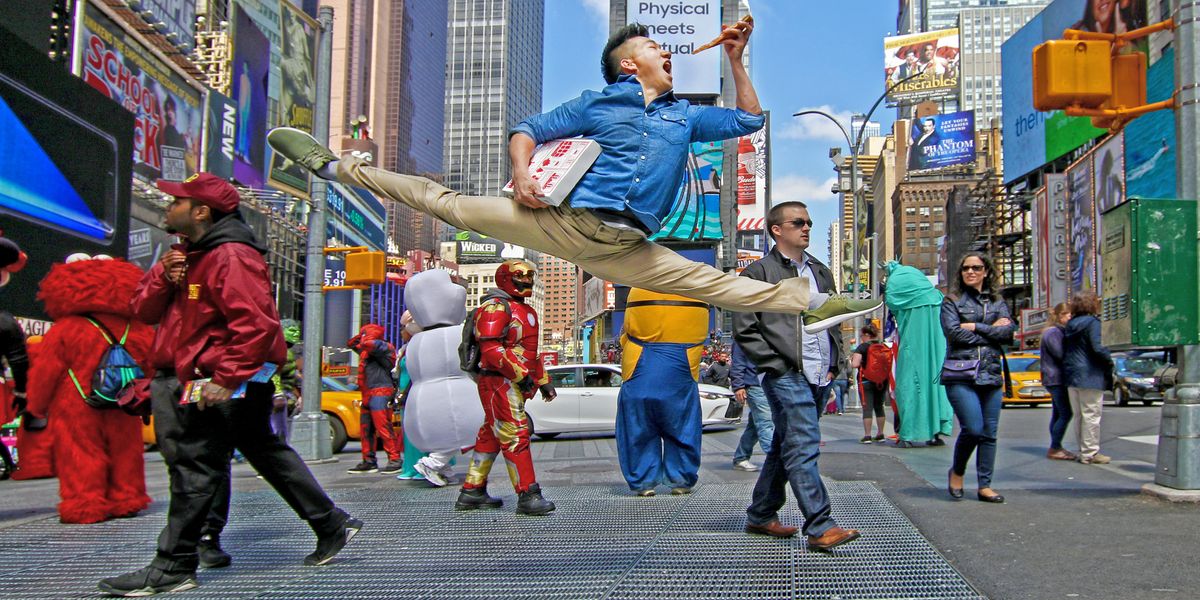These Dancers Prove There's No One Right Way to Do Social Media
When Instagram launched in 2010, few would have predicted it would become the identity-defining, I-can-make-a-living-off-this-thing behemoth that it is today. For dancers in particular, Instagram comes with a host of possibilities. Three dancers share how they translate double taps into career advancements—while thousands of people follow along.
Alice Klock
What she posts:
Klock first joined Instagram to share her paintings, which she sells. A few years ago, she also started posting clips of her choreography for Hubbard Street Dance Chicago and other companies. “I never wanted it to become an egotistical, surface-level thing. I wanted it to be about the work,” says Klock, now co-director of FLOCK.
Why she’s posting:
“We have this whole idea that you can only see dance if you buy a ticket and go to a theater and have money,” she says. “It feels limited. Instagram is a great way to share with everyone, and I feel the point of art is to give it to the people.” She’s received requests from followers to create custom tattoos based on her visual-art work.
The strategy:
Klock posts almost every day, which helps her stay in her followers’ feeds. “I never go out and construct my next post,” she says. “It’s always what I’m up to at that time.”
Most-viewed post:
A short solo from February has more than 32K views.
Alex Wong
What he posts:
Imagine you’re walking down a New York City street when suddenly a super-athletic, super-unassuming passerby erupts into a series of grands jetés and then continues down the crosswalk, unfazed. That’s Alex Wong. His delightful “spontaneous acts of dance” videos are equal parts impressive and hilarious.
Why he’s posting:
“It all started with comedy-slash-dance videos, and the reactions were so great that it just snowballed.”
The strategy:
Though Wong’s videos are polished, they’re not rehearsed. “It’s more spur-of-the-moment,” he says. “As much as I love Instagram, I try not to let it consume my life.” Wong has made some money off his account, through campaigns for Walmart, LG, Kenneth Cole, Pandora, Volvo and Under Armour. But it’s also grown his personal brand. “It’s a live business card.”
Most-viewed post:
“The one with me walking across the street in pointe shoes.” It has more than 1.9M views.
Marlee Grace
What she posts:
Grace’s two accounts have very different purposes: Her @marleegrace profile shares her personal projects, and is more business-minded, while her @personalpractice feed is a series of daily improv videos.
Why she’s posting:
The @personalpractice account started as a video documentation process and transitioned into a daily practice while Grace went through a divorce, came out and started dating women. “The goal has always only ever been for me,” she says. “It’s an accountability process, but it’s also my little playground.” Meanwhile, she uses @marleegrace to talk about her work and promote her books or upcoming classes. “It’s a promotional tool where I share vulnerably about my experiences as a queer person, as a woman, an artist, a teacher.”
The strategy:
While Grace balances self-promotion and creative work, she isn’t trying to appease anyone. Her growth happened organically and fast, she says, and in large part because she kept her posts honest.
Most-viewed post:
An Instagram story of Grace dancing in a cabin in California, rocking out to Sheryl Crow in a white T-shirt and a leotard. “I’m barely even dancing,” she says, but it earned more than 94K views.




